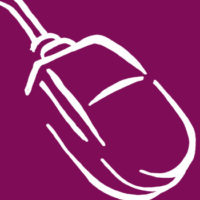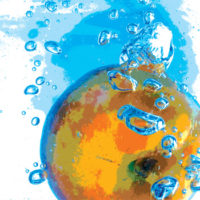Food facilities—whether they deal with food preparation, such as restaurants, or with food processing—are required to comply with an assortment of federal, state and local rules and regulations aimed at ensuring that their food products are handled and prepared in a safe and sanitary manner. These rules and regulations not only address the foods themselves, but also the processes and facilities that are a part of the operation.
Due to variation in requirements at the state and local levels, there is no easy way for a food processor to obtain a “master” list of rules that are applicable nationwide. However, there are a few federal requirements that apply to processors in general. While these regulations address the entire food processing operation, this article will limit its scope to requirements of Title 21 CFR Part 110—“Current Good Manufacturing Practice in Manufacturing, Packaging or Holding Human Food”—as they pertain to ventilation and water in processing facilities.
Ventilation Essentials
The air and ventilation in a food processing facility must meet certain specifications, depending upon where in the facility ventilation is located.
In general, Good Manufacturing Practices (GMP) Section 110.20 Part (6) states that the facility is to “provide adequate ventilation or control equipment to minimize odors and vapors (including steam and noxious fumes) in areas where they may contaminate food; and locate and operate fans and other air-blowing equipment in a manner that minimizes the potential for contaminating food, food-packaging materials and food-contact surfaces.”
If compressed air is used on equipment and/or utensils, Section 110.40(g) states that “compressed air or other gases mechanically introduced into food or used to clean food-contact surfaces or equipment shall be treated in such a way that food is not contaminated with unlawful indirect food additives.” Additionally, 21 CFR 129.35 states that in water-bottling facilities, pressurized air that is directed at product water or a product water-contact surface shall be free of oil, dust, rust, excessive moisture and extraneous materials; shall not affect the bacteriological quality of the water; and shall not adversely affect the flavor, color or odor of the water. This guideline also stipulates that product water and operational water in a bottled water facility shall be from an approved source.
Water Wherewithal
As one would expect, water in a food processing facility must be potable and sufficient for its expected use. Section 110.37(a) states, “The water supply shall be sufficient for the operations intended and shall be derived from an adequate source. Any water that contacts food or food-contact surfaces shall be safe and of adequate sanitary quality. Running water at a suitable temperature, and under pressure as needed, shall be provided in all areas where required for the processing of food, for the cleaning of equipment, utensils and food-packaging materials or for employee sanitary facilities.”
Water used for washing, rinsing or conveying food shall be safe and of adequate sanitary quality [Sec. 110.80(a)]. However, water may also be reused for these purposes if it does not increase the food product’s level of contamination.
Protection of the water supply and removal of liquid waste are also important and are addressed in GMP requirements.
Plumbing in a facility must be of adequate size and design, and must be adequately installed and maintained per Section 110.37(b) to:
• Carry sufficient quantities of water to required locations throughout the plant.
• Properly convey sewage and liquid disposable waste from the plant.
• Avoid constituting a source of contamination to food, water supplies, equipment or utensils, or creating an unsanitary condition.
• Provide adequate floor drainage in all areas where floors are subject to flooding-type cleaning or where normal operations release or discharge water or other liquid waste onto the floor.
• Provide that there is not backflow from, or cross-connection between, piping systems that discharge wastewater or sewage and piping systems that carry water for food or food manufacturing.
Although these are basic requirements, there are other regulations that apply to specific types of processors as noted in the following examples:
• 21 CFR 114 Acidified Foods
• 21 CFR 113 Thermally Processed Low-Acid Foods Packaged in Hermetically Sealed Containers
• 21 CFR 129 Processing and Bottling of Bottled Drinking Water: Bottled-water plants must provide adequate ventilation to minimize condensation in processing rooms, bottling rooms and in container washing and sanitizing areas [21 CFR 129.20 (c)].
• 21 CFR 165 Beverages
Prior to engaging in any food processing or manufacturing operation, it is advisable to work with the appropriate federal, state and local authorities to ensure that you are in compliance with all facility-related requirements.
Jim Dingman is employed by Underwriters Laboratories (UL) in Northbrook, IL. He is a Staff Engineering Associate in the Regulatory Services Department. He holds an M.S. in biological sciences from Colorado State University and is a past president of the National Environmental Health Association (NEHA). He serves on the Board of Directors of both NEHA and the National Environmental Health Science & Protection Accreditation Council. Jim can be reached by email at: James.D.Dingman@us.ul.com.
Ventilation and Water Requirements for Food Processors




